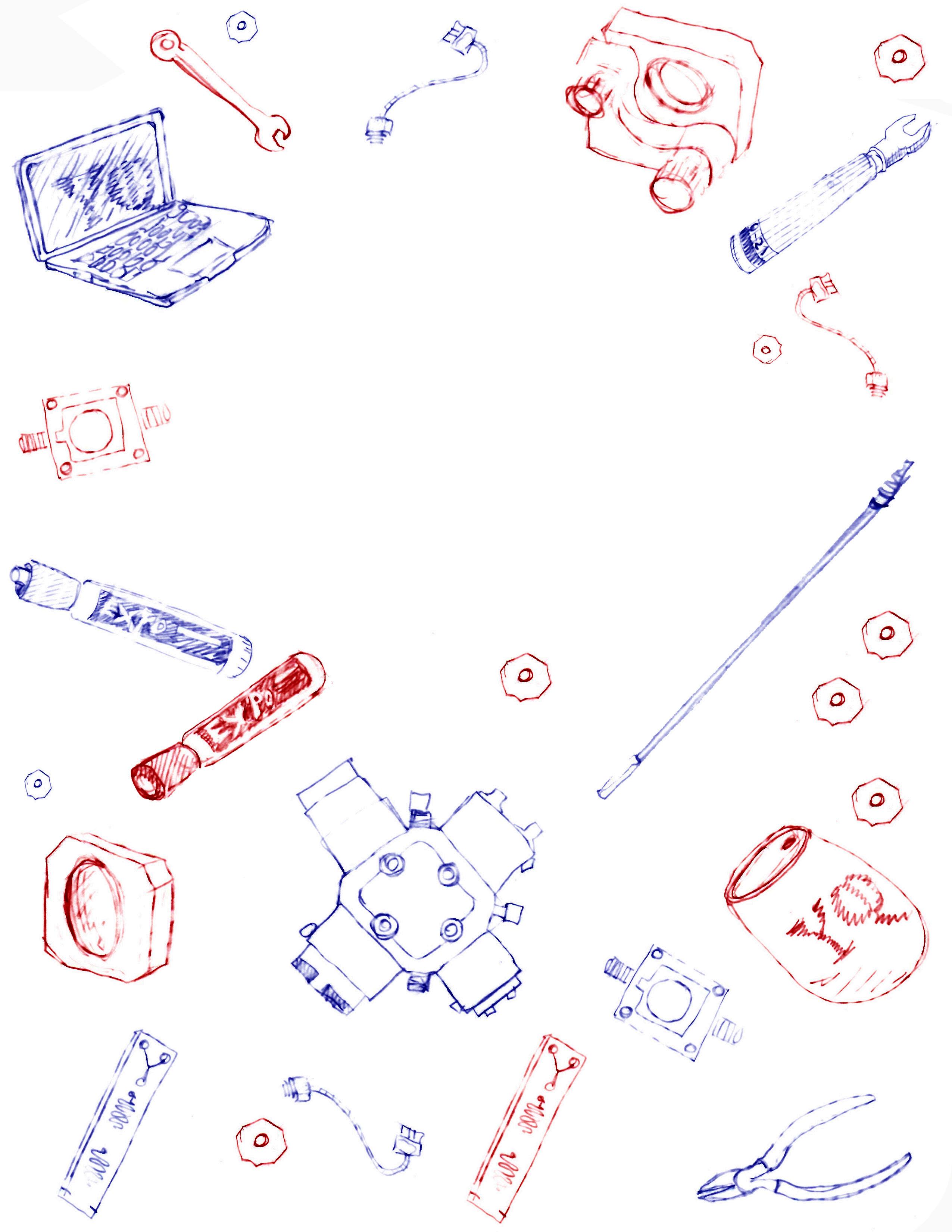

Home of everything quantum at Yale
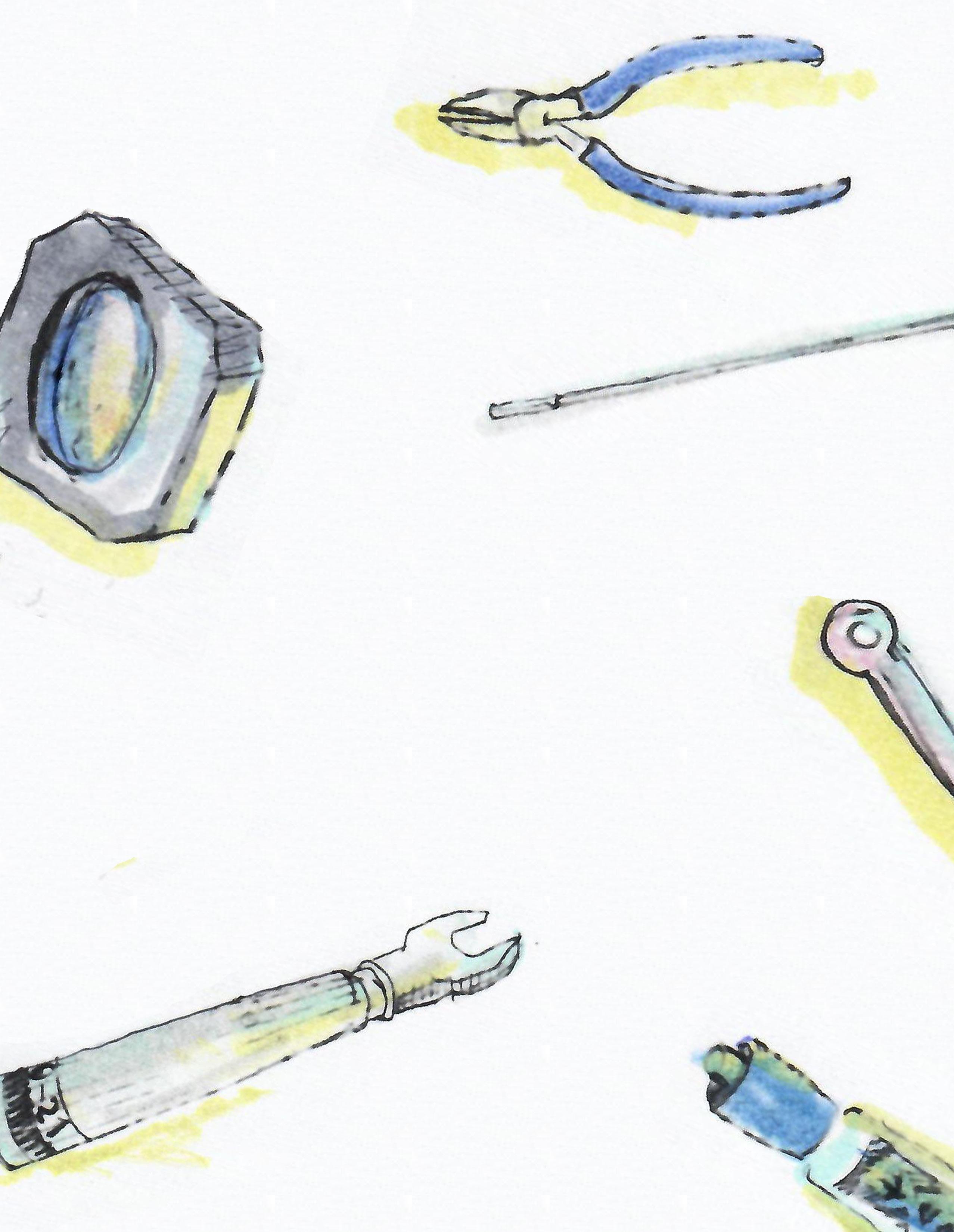

Director’s Word
Entering the seventh year since its founding, the Yale Quantum Institute is fully engaged in its mission to support research and training in quantum science at Yale.
RObert Schoelkopf DIRECTOR Sterling Professor of Applied Physics and Physics Rob Schoelkopf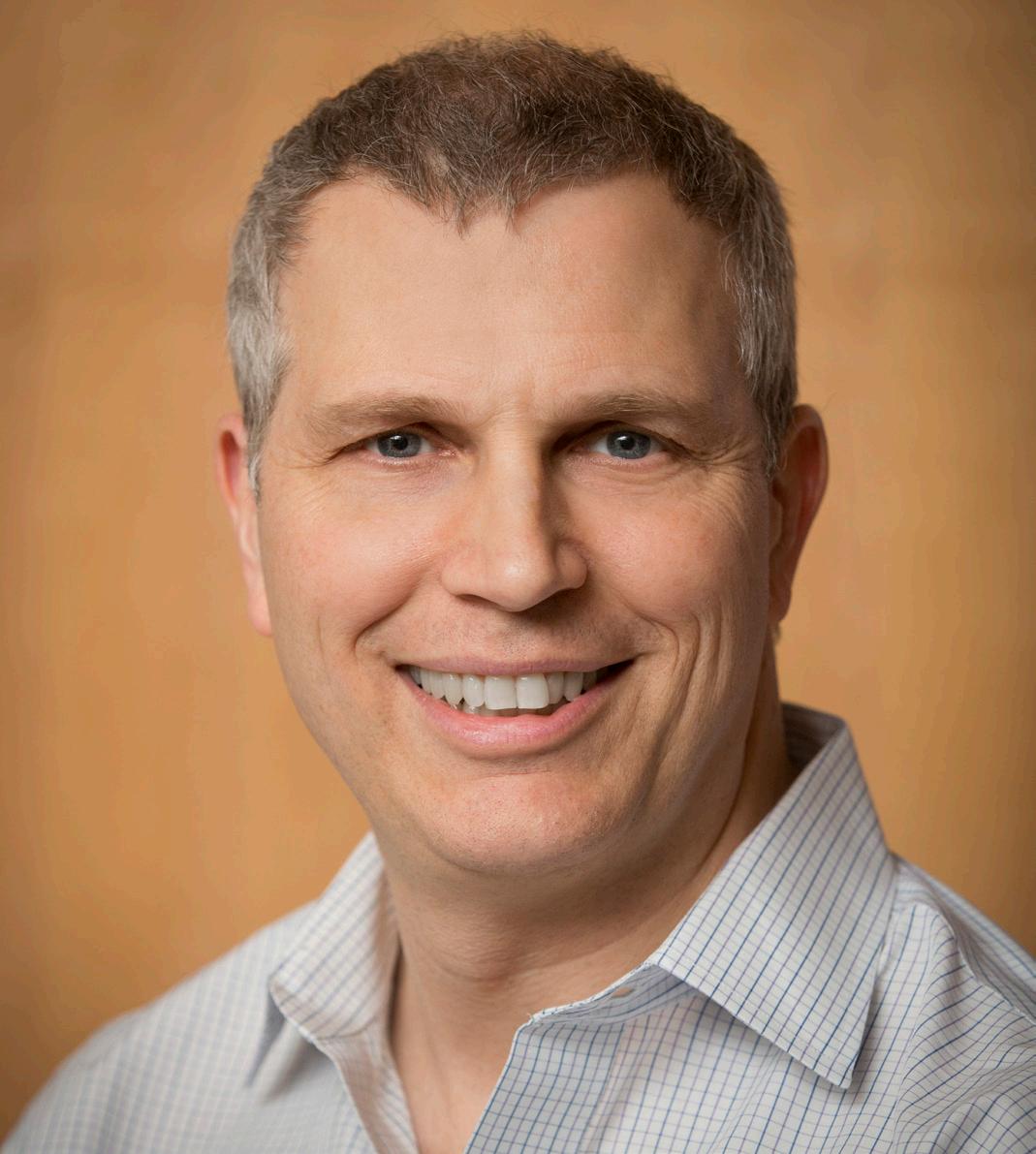
As the Yale campus is slowly reopening with the goal of return to full capacity on campus this Fall, I want to look back to the year and commend the efforts of the researchers, students, and staff who, despite the challenges of remote work and the stress of living through a worldwide pandemic, have continued to perform incredible work: testing new prototypes, developing theories, refining simulation, all with the unified goal of increasing our understanding of quantum science and information.
Although the pandemic introduced some delays in all of our plans, the University remains committed to the priorities articulated in the strategy for quantum science and engineering, and we are continuing to advance the planning and lay the groundwork for rapid progress to meet the University’s ambitious goals. The YQI and our members are ready to play a key role in the next phase of growth in this field in research, engineering and teaching activity at Yale.
Adapting to the limitations on in-person activities, the Institute hosted more than 50 virtual events in this past year to engage the scientific community working on quantum science and information. We took full advantage of this newly virtual world (see page 8) to invite leaders in the field who might not have been able to give a talk at YQI in person due to schedule or travel constraints. We hosted a day-long joint workshop with researchers of University of California Santa Barbara and of the NSF Quantum Foundry to encourage shared-use of manufacturing facilities to improve technology, technique, and know-how dissemination. We also shined a spotlight on our new YQI Members’ research by launching a new series of seminars about quantum research performed
at Yale to foster collaborations between researchers in our five departments: Applied Physics, Chemistry, Computer Science, Electrical Engineering, and Physics.
Special efforts have been focused to engage high school and undergraduate students with quantum science by offering programming which allow new people to the field to have hands-on experience on new quantum technologies. We hosted two quantum hackathons with the industry leaders (IBM, Google, Microsoft, Amazon, and many quantum start-ups), organized public talks (page 14) about the importance of paying attention to quantum topics to understand where quantum technology is heading, and sponsored the creation of a new students-run group Yale Undergraduate Quantum Computing (page 13). We expect that these events, in addition to YQI’s cutting-edge research seminars and symposia in QSTEM by visiting scientists, as well as tutorials on relevant topics in quantum science and information, professional and workforce training, will allow current students to become part of the future generation of researchers advancing this fascinating field.
Additionally, YQI helped facilitate a series of meetings to kick start the Co-design Center for Quantum Advantage (C2QA), one of the five US National Quantum Initiative Hubs. As you can read in the interview of C2QA’s director and YQI Member Steve Girvin (page 18), Yale and YQI is play a major role in this center aiming at building the fundamental tools necessary to create scalable, distributed, and fault-tolerant quantum computer systems.
We invite you to learn more about our work and programs through this annual report, and to share our optimism for new scientific and technological advances for the benefit of mankind. The Yale campus will be operating in many ways normally in the coming Fall, with a fully vaccinated population of faculty, students and staff; and while all details are not yet known, we are looking forward to seeing you in person at YQI very soon.
YQI Executive Team
A. Douglas Stone DEPUTY DIRECTOR Carl Morse Professor of Applied Physics and Physics Florian Carle
Florian Carle
 INSTITUTE MANAGER
Benjamin Franklin College Fellow
INSTITUTE MANAGER
Benjamin Franklin College Fellow
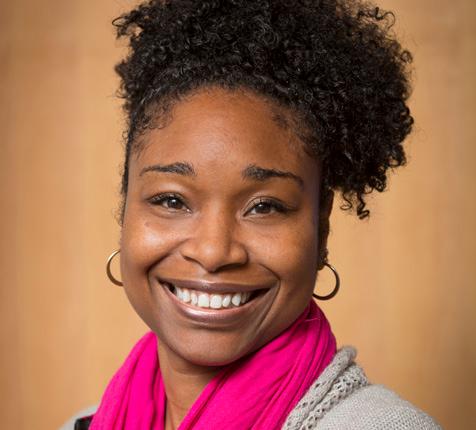
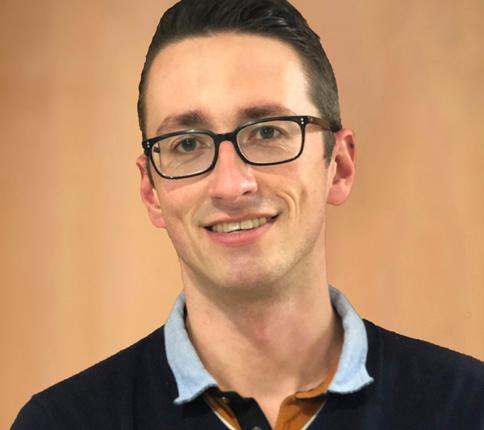 Racquel Miller
EVENT COORDINATOR
Racquel Miller
EVENT COORDINATOR
About the Institute
The Yale Quantum Institute facilitates quantum science research and teaching on the Yale campus.
Life as we now know it would not be possible without several profound scientific and technological revolu-tions over the last century: the Industrial Revolution, the internal combustion engine, the telephone, and, most recently, the Digital Revolution which ushered in computers, cellular phones, and the Internet.
This transformative period was made possible by quantum theory, developed in the first half of the 20th century, which explained the fundamental laws of the atom and of light. At the onset of the 21st century, we are on the brink of a new quantum revolution – and Yale is paving the way.
Our faculty members, spanning the departments of Physics, Applied Physics, Computer Science, and Electrical and Mechanical Engineering, are making scientific breakthroughs that would have been unimaginable only a few decades ago. The Yale Quantum Institute was formed in 2015 to advance the progress in fundamental and applied quantum science at Yale and in the broader community of researchers across the globe. Yale has particular expertise in the theoretical and experimental development of new technologies to store and process quantum information. Our goal is to better understand the fundamental quantum laws that govern our universe, and to harness the unique features of quantum mechanics for novel sensors, secure communications, and, eventually, the realization of large-scale quantum computers. We now know that by employing a kind of massive parallel processing, computers based on “quantum bits” can address problems that would otherwise remain forever beyond the reach of our current computers. These problems include basic algorithms underlying secure com-munication on the internet as well as quantum simulations of new materials, complex optimization problems, and improved machine learning. As with conventional computers, the true scope of their utility will only be discovered once they are built.
Beginning with pioneering work on macroscopic quantum coherence in the 80’s, to the realization of today’s quantum information processors, Yale professors are renowned for their leadership in the Quantum Revolution. In the past fifteen years, under the leadership of Devoret, Girvin, and Schoelkopf, the Yale superconducting science and technology team, comprising more than fifty researchers, has demonstrated several milestones in quantum computing including the development of the first solid state quantum information processors based on superconducting electronics. Together, the members of YQI are pursuing the collective goal of turning quantum physics into practical technologies and advancing our fundamental understanding of quantum science and engineering. We welcome researchers from around the world to visit and participate in this intellectual adventure.
Institute composition in 2020
History
2014
First event of the Yale Quantum Institute
2015
Official launch of the Yale Quantum Institute by President Peter Salovey in newly renovated conference and office space in 17 Hillhouse Avenue.
2016
YQI researchers explore a new paradigm for quantum computing based on “Schrodinger Cat” states of light (photons). They are the first to demonstrate effective error correction with photon qubits, a critical step towards computation with logical qubits.
2019
YQI researchers and artist-in-residence Spencer Topel use Yale quantum computers prototypes to make music based on quantum signals. One might call this the first real application of quantum computers!
Virtual events in 2020
53

Our in-person activities were drastically reduced by the pandemic, but we still had at least one event a week in 2020. That’s a lot of Zoom!
2020
PIt is announced that YQI and Yale researchers will play a major role in one of the 5 new national centers for quantum research: Co-design Center for Quantum Advantage (C2QA), led by Brookhaven National Laboratory
YQI Remotely

Working from Home
EVERY ROOM IS AN OFFICE!
Following the guidelines of the University and the State of Connecticut, all YQI activities (research and events) were moved online for much of the year. In June, we were able to slowly and safely reopen YQI to allow our members to continue their work.
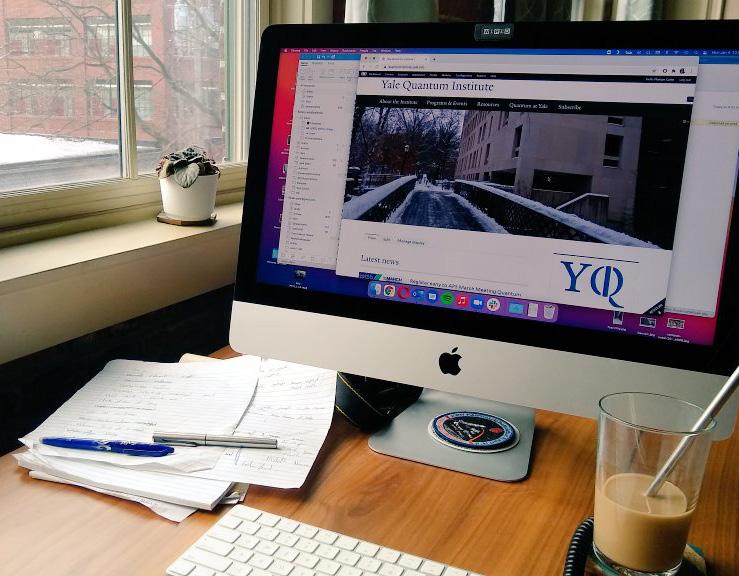
Virtual YQI Space
NEW TOOLS TO COMBAT ZOOM FATIGUE
Although video calls allowed us to continue our work seamlessly, we quickly realized endless videocalls were taxing and not always necessary. To combat this “zoom fatigue”, YQI utilized other online tools to allow our researchers and students to better work remotely when possible, like a virtual YQI space on Gather.Town, a Slack channel, and recording talks to allow for asynchronous viewing.

Working in the lab
MASKS AND SOCIAL DISTANCING
For our experimental researchers that cannot work remotely, Yale put in place safety protocols (drastic reduction of the laboratory capacity, alternative shifts, social distancing, PPE use, frequent asymptomatic testing, etc.) to ensure the safety of everyone working in the laboratories. With these measures in place, we are pleased that thus far, no outbreak has been linked to work in our laboratories.
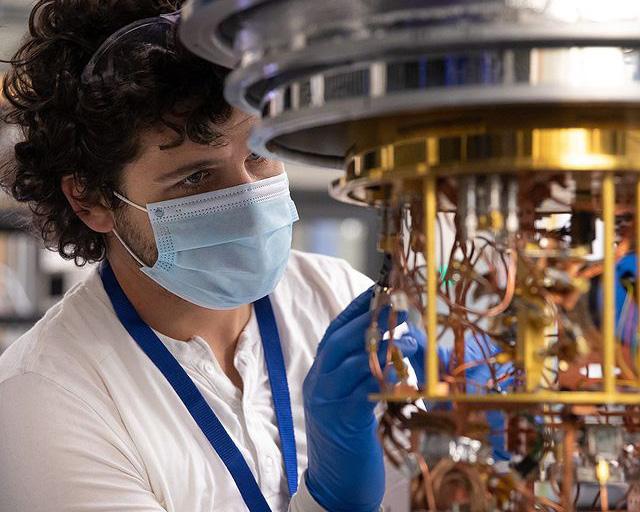
While the pandemic impacted all aspects of our personal & professional lives, we used all tools available to us to make the most of this challenging year.
Broadcasting from YQI ON DEMAND QUANTUM
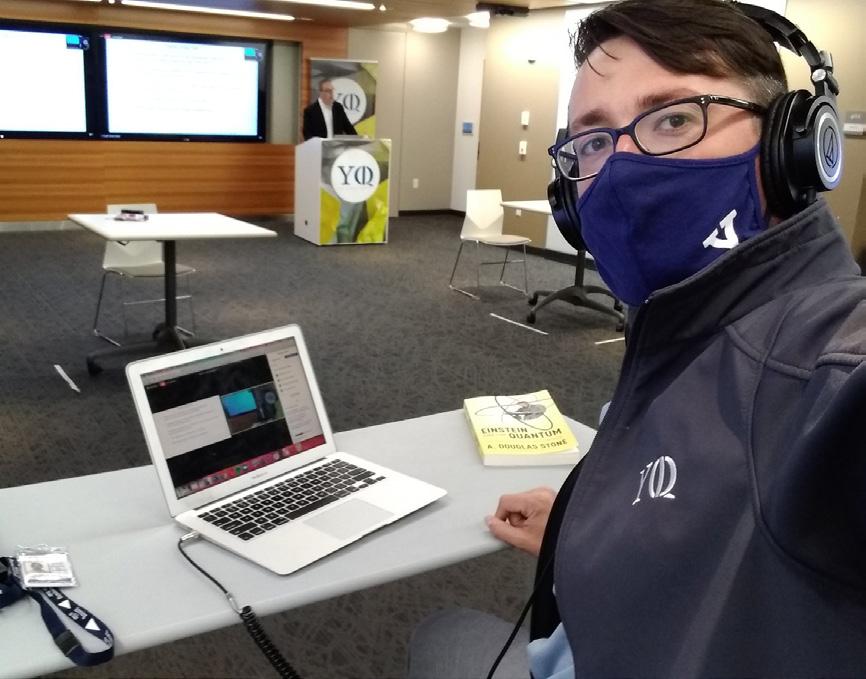
We turned the YQI Seminar room, which used to host crowded events (up to 148 persons in the same room at one point in 2019!), into a socially distanced space to broadcast talks and events, and record classes and tutorials. These efforts were made possible through the new video equipment installed in the room in early 2020.
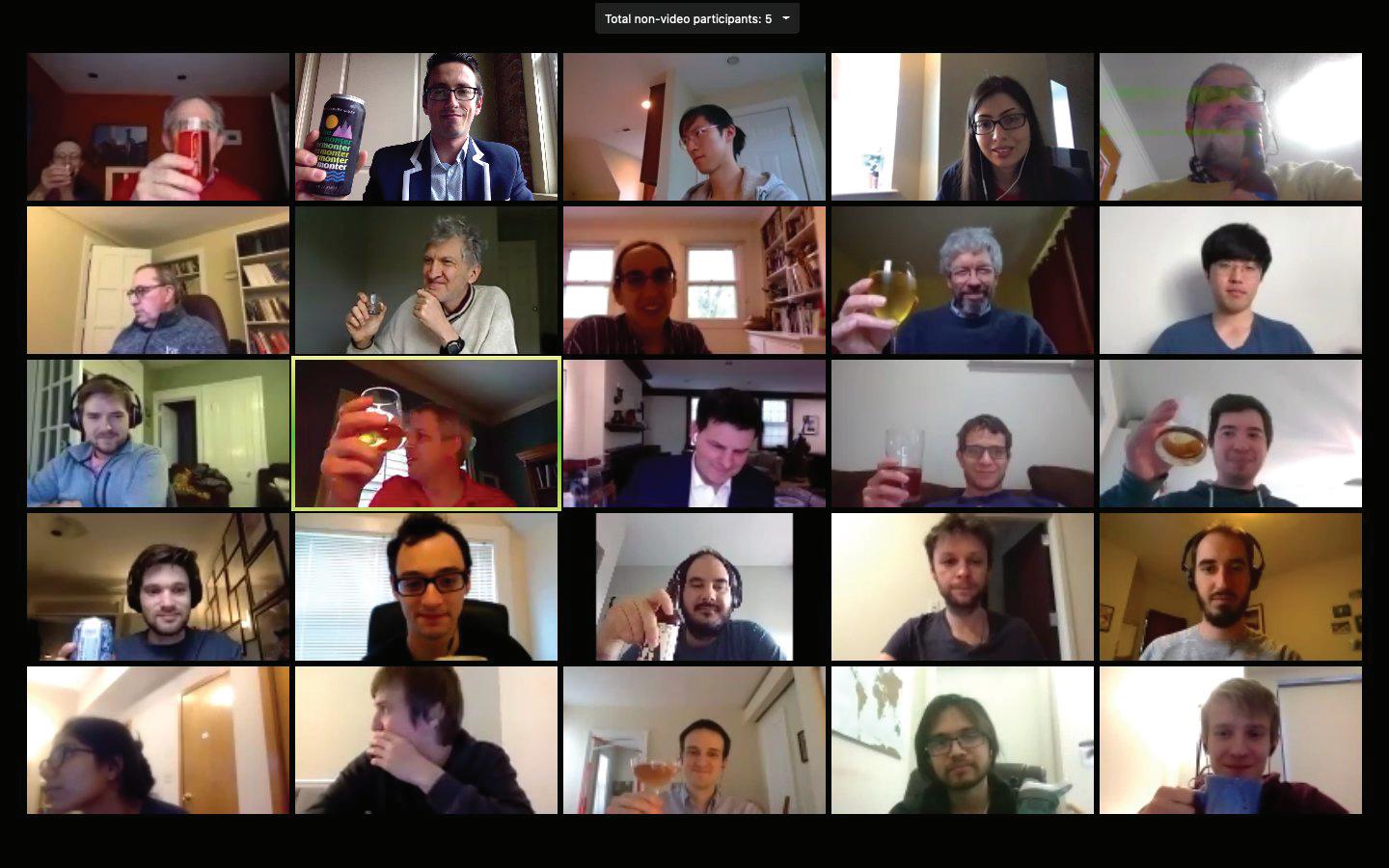
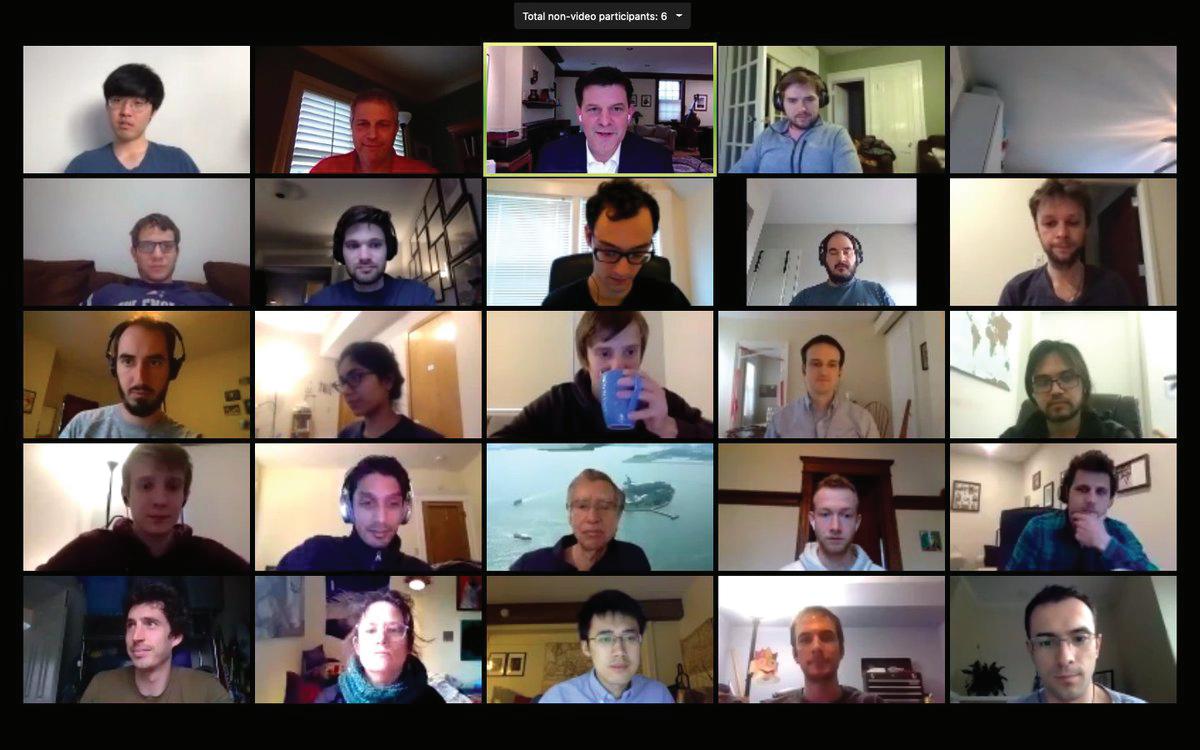






Technical difficulty Interactivity with the audience
Online celebrations
ZOOM CLAPPING
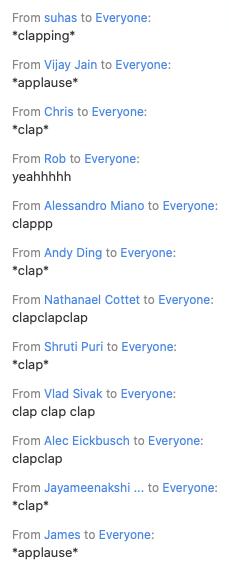
Nothing can replace the feeling of community created by in person event, especially for celebrations. We made do with Zoom, but are keeping track so that we can redo these celebrations in person, when possible!

April
YQI Member Nicholas Read elected as a fellow of the Royal Society

May
Nuch Grave celebrated 5 years of service in AP
August
New AP Faculty Shruti Puri became our latest YQI member
September
Micheline Soley joined us as the 2020 YQI Fellow


September YQI Member Reina Maruyama named APS Fellow
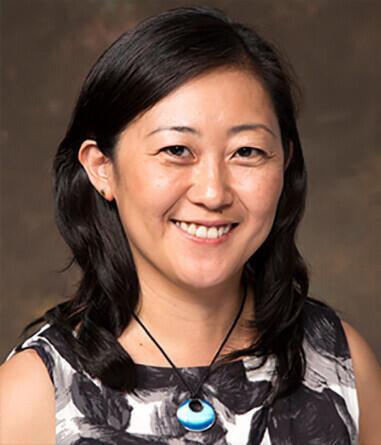
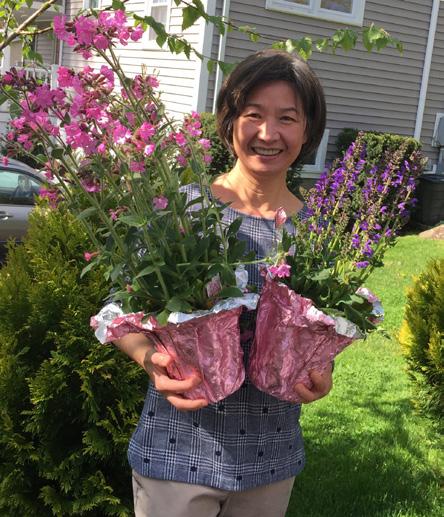
Mission
TThe Institute acts as an intellectual hub for quantum information science and engineering, and of quantum science more generally, through fostering collaboration and welcoming world leaders in the field.
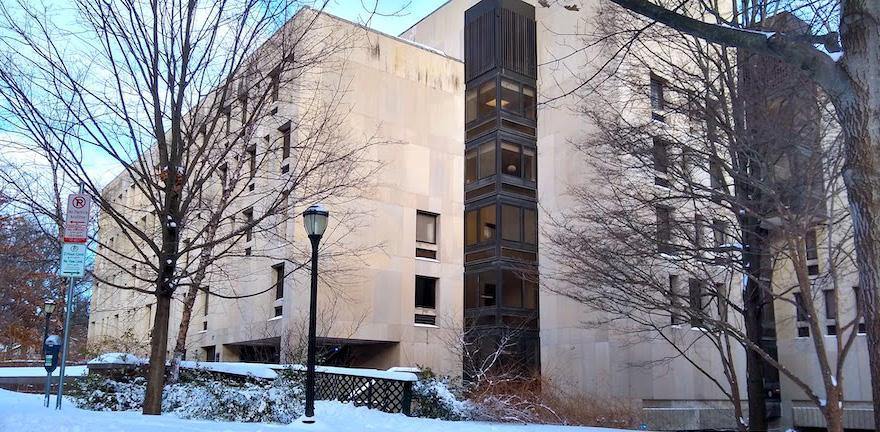
The Yale Quantum Institute was founded to enhance Yale’s leadership in the field of quantum science and tech¬nology. It serves as a forum to bring together experimental and theoretical researchers at Yale in the fields of quantum information science and engineering, quantum control, quantum measurement, and quantum many-body physics and chemistry. The Institute also runs an active visitors program to bring in quantum scientists from leading institutions worldwide, and hosts conferences and workshops in sub-fields relating to its core mission.
The past two decades have seen breakthroughs in both the theory and practice of quantum science. The properties of superposition and entanglement, once thought of as paradoxical and counter intuitive, are under¬stood now as unique resources. Recent progress in the laboratory allows unprecedented control over individual quantum objects, whether they are naturally occurring microscopic systems like atoms, or macroscopic man-made systems with engineered properties.
These advances may soon enable us to: perform otherwise intractable computations, ensure privacy in commu¬nications, better understand and design novel states of matter, and develop new types of sensors and measure¬ment devices. Today, a new discipline is emerging which combines physics, chemistry, electrical engineering, mathematics, and computer science to further the basic understanding of the quantum world, and to develop novel information processing devices and other quantum-enabled measurement and sensing technologies.

Colloquia & Seminar Series
Every academic year, the Institute presents an exciting series of technical seminars and colloquia from experts in the fields of quantum information science, quantum control, quantum measurement, and quantum manybody physics. Speakers are proposed by members of the Yale Quantum Institute community and approved by a selection committee. The talks are attended by a diverse cross section of the university ranging from undergraduates to emeritus professors.
Venue for quantum information events
The Institute hosts many seminars, presentations, group meetings and other events in the field of quantum information science and engineering.
YQI also organizes the annual Yale Science and Engineering Forum, and we recently hosted the joint UC Santa Barbara/ YQI workshop. All of our events are open to any interested students, professors and staff from Yale or other academic institutions.
Distinguished lecturer series
To recognize a researcher whose work significantly advances quantum science, YQI awards the title of Distinguished Lecturer, with emphasis on the areas of mesoscopic physics, nanoscience, quantum information, quantum computing and related theoretical and mathematical topics. Annually, a Distinguished Lecturer is invited to visit the Yale Quantum Institute to deliver one or more lectures about their work and how it has advanced our understanding of quantum science.
& Programming
YQI Fellowship

In keeping with the mission of the Institute to facilitate research and teaching of quantum physics, the YQI Fellowship Program provides funding for recent Ph.D. recipients to join any YQI faculty member’s group for a 2-year period. YQI Fellows are young researchers who have demonstrated excellent research ability in their prior work and exceptional promise for future leadership in their field of quantum science. Apply at quantuminstitute.yale.edu/apply.
Networking and professional development
We offer a selection of presentations to help students and postdocs with career development, job searching, and networking. For this series, Yale alumni share their career experiences, answer questions on working in their industry, and offer an opportunity for attendees to build a career network. Speakers in this series have included noted scientists, industry leaders, and legal advisors.
YQI’s Mandate
Quantum
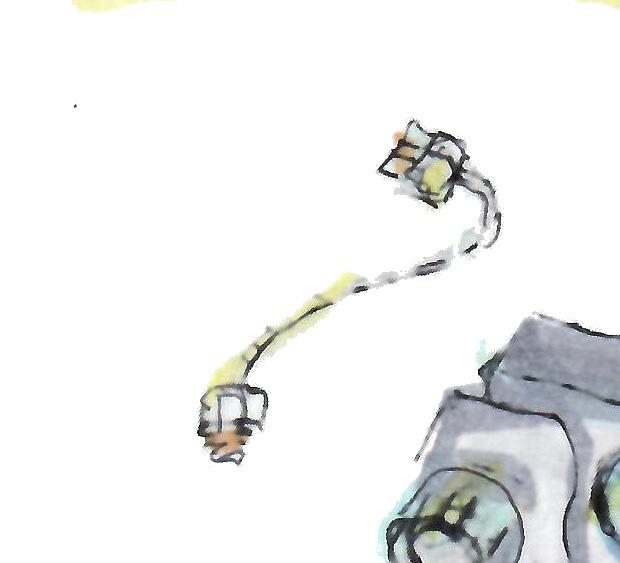
is
Excellence in research and outreach go hand in hand
All the programming and outreach activities performed by YQI is only possible thanks to the excellence of the research performed in the quantum laboratories. For more than 20 years, Yale has been at the forefront of quantum research, developing systems, theories, algorithms, tools, and techniques that have been widely adopted by the industry and tech giants, and training graduate students and postdocs who became an invaluable workforce: researchers and leaders in industry and national laboratories, lecturers, and associate and full professors in academia. YQI’s programming and outreach activities are made possible by the excellence of quantum research performed at Yale.
Diversity, Equity, and Inclusion
The Yale Quantum Institute is committed to fostering an environment of diversity, equity, and inclusion for every member of our community as we strive for excellence in research, teaching, and mentoring. We have established programs encouraging a welcoming environment that respects groups and their individual members: Physics Open Mic empowers students and postdocs by giving them a platforms to voice their ideas; the Women In Quantum Information group promotes an inclusive environment for women in the field; and the speakers for our outreach programing are invited with gender parity and racial diversity in mind to give attendees a correct representation of the field as well as challenge unconscious bias.
Our Audience
Faculty
We support YQI Faculty members by facilitating their day-to-day work and allowing them to focus on their research.
Students
We encourage and support student activities, both logistically and financially, to help them achieve their goals.
Researchers
Our numerous seminars encourage collaboration and networking between departments.
Public
We believe it is our ethical imperative to explain our work to the general public, especially since much of our funding is provided by taxpayer dollars through institutions such as NSF and the national laboratories.
science
seen as a particularly difficult and intimidating subject. At YQI, we work to make it accessible to all.
Supporting Students Initiatives
In addition to developing programming for our audience, YQI relies on student feedback and supports multiple initiatives to offer students opportunities to lead and grow.
Yale Undergrad quantum computing
• The Yale Undergrad Quantum Computing (YuQC) group is an undergraduate academic organization formed to promote and facilitate the participation of undergraduates in quantum information science at Yale.
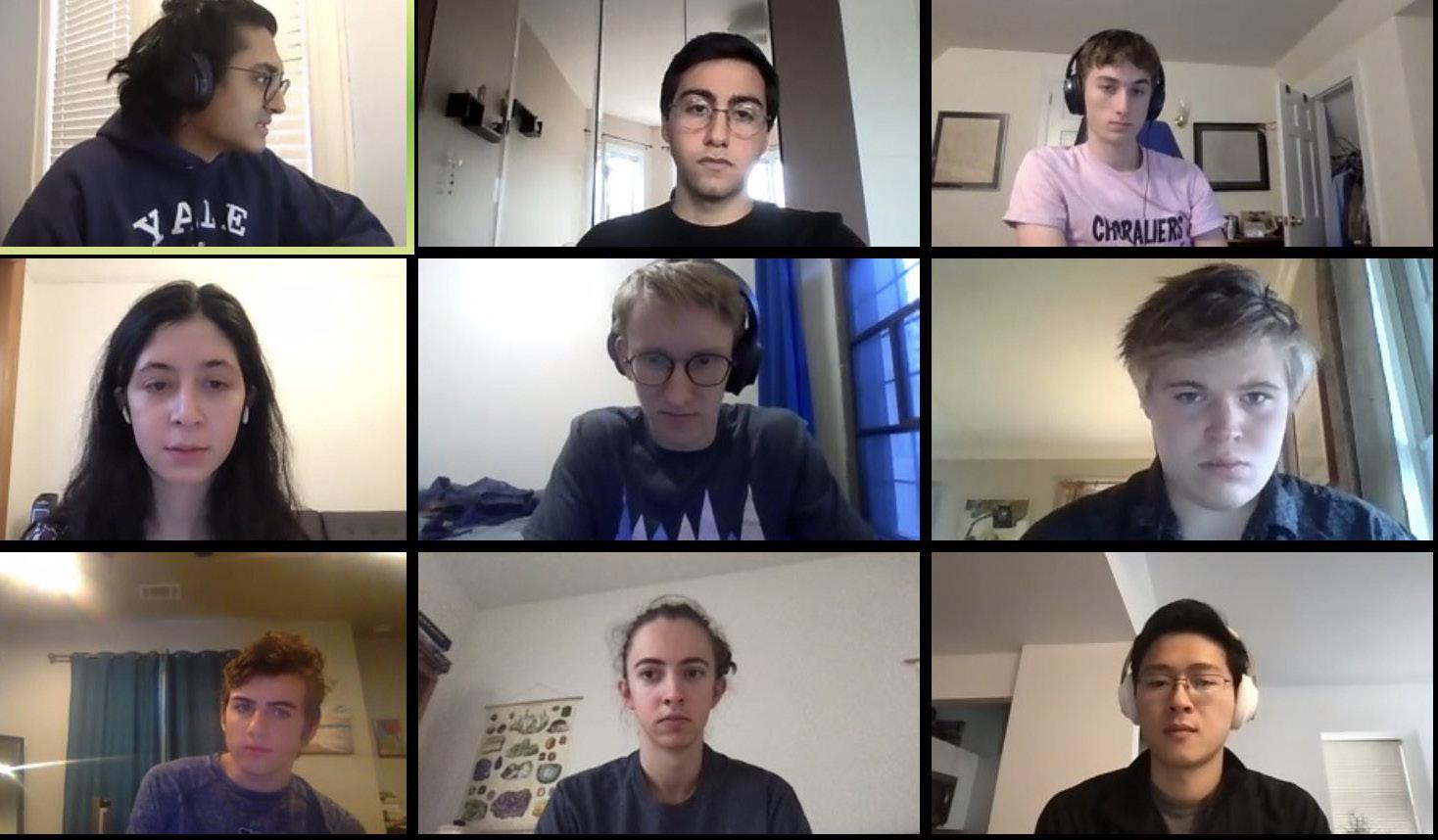
• YuQC is the newest student group to form in late 2020
• For more info about the group and to be involved, go to yaleqc.com
Women in Quantum Information
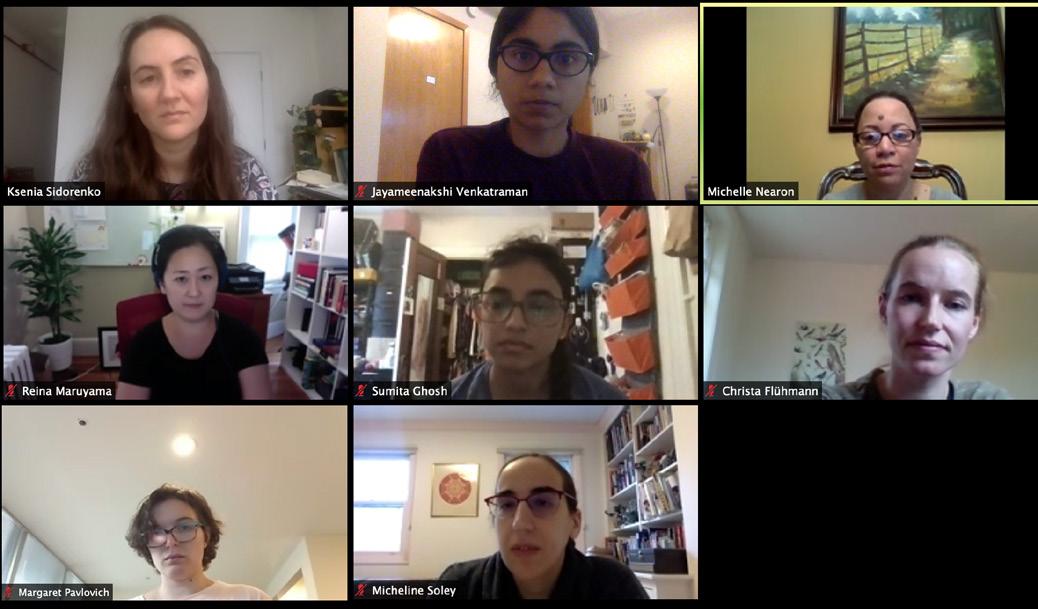
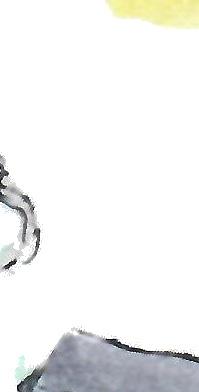
• The aim of WIQI is to promote an inclusive environment for women in the field by creating a platform where young women scientists can voice concerns and seek advice.
• The group seeks to increase retention of female students in quantum science through activities such as lunches, panels, and workshops focused on quantum science.
Physics Open Mic
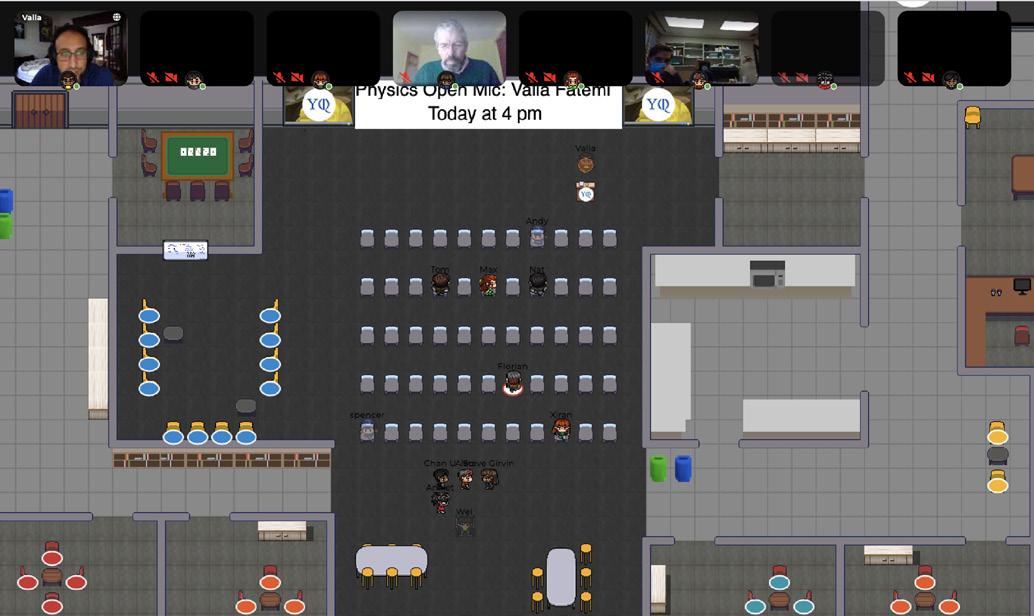
• An informal lecture series by and for graduate students and postdocs to share their love and enthusiasm for physics while practicing their communication skills in a relaxed setting.
• The talks cover anything related to physics, not necessarily related to the presenter’s research at YQI, offering a great way to expand the audience’s interests.
Outreach Programs
Artist in Residence
QUANTUM AT THE EDGE OF ART
Central to our outreach efforts is the Artistin-Residence Program. Each year, the Institute welcomes an artist for a year-long residency in which they produce quantum science-based artwork and visuals and participate in a series of public talks to explain their work and the science behind it. One of the goals of this program is to bridge the humanities-science divide.
The artists are rigorously selected by YQI Institute Manager, Florian Carle, based on the quality and presentation of their work, their background, and experiences.
We are always on the lookout for artists interested in our program.
Visit art.quantuminstitute.yale.edu
Nontechnical talk Series
FRANKE PROGRAM & YQI JOIN FORCES
YQI organizes non-technical talks to engage the public and try to combat science-phobia, more specifically, quantum physics phobia. These talks seek to communicate the excitement of scientific exploration and educate the audience about the role that science plays in our daily life. At the time of this report, we have organized 11 non-technical talks that attracted 759 attendees, indicating a great need for and interest in this type of programming.
These talks are co-sponsored by The Franke Program in Science and the Humanities
Public COnversations
PURE SCIENCE OUTREACH
Our newest outreach program is public conversations; two or three people chatting on a somewhat general topic that allows the conversation to flow from one idea to another depending on the interest of the participants and of the audience.
The panels consist of a mix of YQI members and non-physicists to reduce jargon and make sure concepts are explained in layman terms. These public conversations are informal events where the audience is encouraged to take part in the conversation by asking questions or sharing ideas and comments.

YQI’s public programs invite everyone to learn and reflect about this exciting new area of science and technology
I became interested in quantum computing as a result of YQI’s public lecture in November. Thank you for raising public enthusiasm for quantum science!
759
YQI/FRANKE NONTECHNICAL TALK ATTENDEES
I really appreciate how YQI bridge the sciences and arts. I’m not sure I’ve seen anyone else run a program quite like it!
469
SCIENCE LECTURE ATTENDEES

342

ARTIST-IN-RESIDENCE EVENT ATTENDEES
Since the creation of the outreach programs in 2017
Applied Physics joins SEAS
 William Weir for Yale News
William Weir for Yale News
In celebration and acknowledgment of their long intellectual and working history at Yale, the Department of Applied Physics and the School of Engineering & Applied Science have officially rejoined forces.
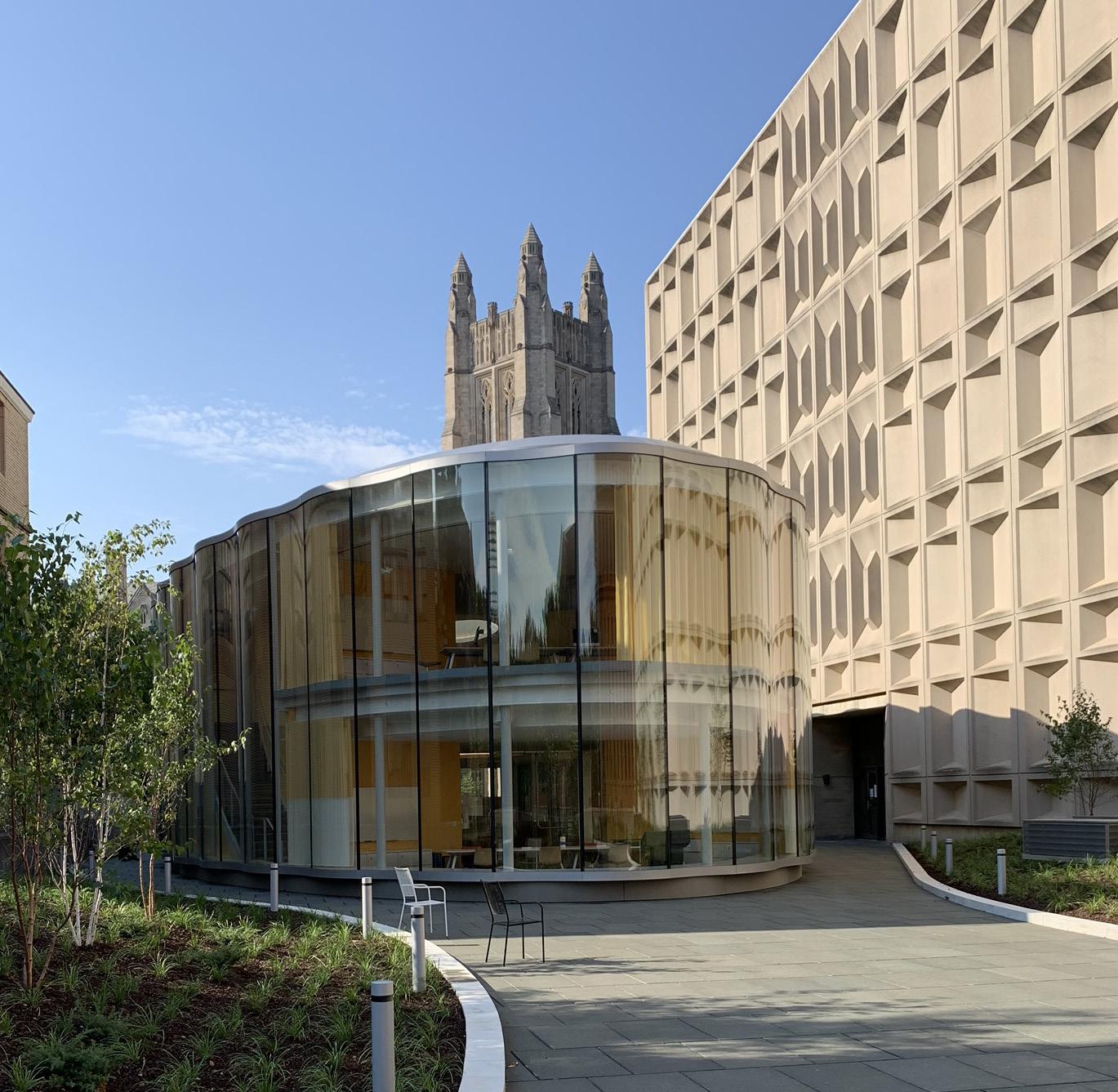
A s of July 1, 2020, AP is a member of SEAS, joining the school at a pivotal moment in Yale’s history, as the university carries out a set of large-scale strategic investments in science and engineering. The field of applied physics seeks solutions to critical problems through the study of nature’s laws and by the application of technology. That, said SEAS Dean Jeffrey Brock, makes SEAS an ideal home for the department.
“This is a great move for the School of Engineering & Applied Science, Applied Physics, and the university,” Brock said. “AP is a crucial link between physics and engineering. By bringing AP back into SEAS, that link becomes even more pronounced, and collaborations will surely be all the more fruitful and better resourced.”
Charles Ahn, the chair and John C. Malone Professor of Applied Physics, Mechanical Engineering & Materials Science, and Physics, noted that the department has strengths in “multiple areas of interest to SEAS, including materials, quantum information, and optics.”
“AP looks forward to partnering with SEAS departments to work together at the frontiers of engineering and applied science,” he said.
The move also brings the university one step closer to fulfilling its strategy for the sciences and engineering. The Report of the University Science Strategy Committee (USSC) noted that Yale has “great potential to be the first institution with a comprehensive university-wide research and education program in Quantum Science, Engineering and Materials.” Such a program would advance the frontiers of knowledge, train the next-generation workforce for this field, and serve as a valuable meeting
ground for students and faculty.
In recent years, Applied Physics at Yale has been one of the leaders in the field of quantum computing. Faculty members Michel Devoret and Robert Schoelkopf — a team that pioneered the field of quantum computing with superconducting circuits — are the principals of Quantum Circuits Inc., a startup founded to build and sell the first practical and useful quantum computers.
Since 2010, when AP left the school as part of a restructuring, Devoret said rejoining SEAS has been a “longstanding collective wish of the department in general.”
“My group is already collaborating with professors in Electrical Engineering, such as Hong Tang, so that will definitely be easier,” he said. “I think the most important element is that we’re sharing the whole infrastructure, so it’s much better to be part of the same school.”
In recent years, faculty from SEAS and AP have collaborated on numerous research projects, including one that focuses on finding new materials for the hardware of quantum computing. Selected and funded by the U.S. Department of Energy, the ongoing project seeks to develop the core quantum computing and networking components that would make the uncanny world of quantum physics realistic for computing.
Other SEAS-AP collaborations have emerged out of several interdisciplinary research programs, such as the Center for Research on Interface Structures and Phenomena, an interdisciplinary materials research center that was funded by the National Science Foundation; the Yale Quantum Institute, which facilitates the research and teaching of quantum science on campus; and the Yale Institute for Nanoscience and Quantum Engineering, which focuses on nanoscale research and applications and brings together researchers in the physical sciences and engineering with those in the fields of medicine and biology.
“The FAS and the university are extremely fortunate to have Jeff Brock at the helm of both SEAS and the FAS science division,” said FAS Dean Tamar Gendler. “His visionary commitment to the distinct way in which Yale builds bridges from engineering and applied science to science, mathematics, and data science — as well as to the social sciences, humanities, and arts — exemplifies what makes Yale so inspiring.”
“By leveraging our strength in quantum science, engineering, and materials, SEAS can build a foundation for excellence and new models for how Yale can engage with the fundamental problems confronting society.”
- Jeff Brock
Yale scientists to help lead national quantum center
Yale will play a major role in a new, national center for quantum research
announced Aug. 26 by the White House and the United States Department of Energy.
The new Co-design Center for Quantum Advantage (C2QA), led by Brookhaven National Laboratory, launches with funding of $115 million over five years. It is one of five National Quantum Information Science Research Centers announced by the government. Steven Girvin, the Eugene Higgins Professor of Physics at Yale, will serve as director of C2QA and have a dual appointment at Yale and Brookhaven’s Energy and Photon Sciences Directorate. In all, two dozen institutions will participate in C2QA, which will bring together scientists and engineers from a variety of backgrounds with the goal of dramatically advancing the state of the art in quantum information processing and communication. Girvin spoke with YaleNews about C2QA’s mission and Yale’s involvement.
How do you envision the scope of C2QA’s work?

The mission of our center is to carry out the fundamental interdisciplinary research that will break us out of the current era of noisy, intermediate-scale quantum computers and lead the way forward into the era of practical, large-scale quantum computers that will offer a large computational advantage over traditional computers. We will also focus on key quantum communication technologies needed to network clusters of quantum computers.
How involved will Yale researchers be in this effort?
Yale researchers will play a key role in this very large effort (24 institutions, 75 investigators). I will be the scientific director for the center. Robert Schoelkopf (applied physics) will lead the devices group, seeking to dramatically improve the performance of quantum bits (qubits) and related hardware. Hong Tang (electrical engineering) will lead the devices sub-group on transduction of quantum signals between the microwave domain, where the computers and superconducting qubits work, and the optical domain where optical fiber can be used for quantum networking. Peter Rakich (applied physics) will design hybrid optical/mechanical systems for signal
Partners locations
National Laboratories
transduction. Michel Devoret (applied physics) will lead the devices sub-group on quantum error correction. Leonid Glazman (physics) will provide theoretical support to the devices group by modeling various sources of noise and errors in superconducting qubits. Charles Ahn (applied physics) will synthesize and characterize new materials for quantum devices. This is an important new area of collaboration for us.
How important is quantum research to the future of society in general?
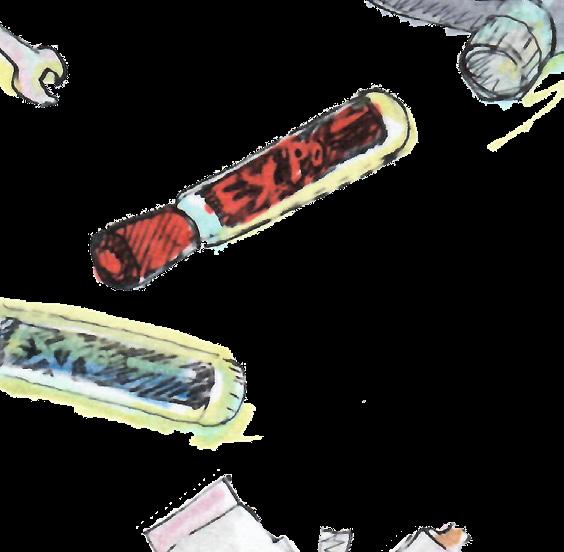
The first quantum revolution nearly a century ago brought us the technological revolution of the 20th century based on the transistor, the laser, and the atomic clock. These inventions have given us the computer revolution, optical fiber communication and the global positioning system, all of which are vital to the world economy. As important as these inventions are, we have now come to understand that these devices do not harness the full power of quantum machines. We are in the early stages of a second quantum revolution in which we are beginning to be able to harness this full power for useful tasks. The scientists who invented the transistor, laser, and atomic clock could not imagine the 20th-century technological revolution they would trigger. Similarly, we do not yet know all the applications the second quantum revolution will bring, but we anticipate that they could be as revolutionary as the first. If we can build practical, large-scale quantum computers, we hope to be able to design new catalysts for energy-efficient synthesis of chemicals such as fertilizers, design new drug molecules that will bind to specific targets, and rapidly solve complex optimization problems of great commercial and scientific importance.
What role has Yale expertise in quantum research played up to this point?

The first all-electronic quantum processor was invented by the Yale team a decade ago. Yale’s superconducting “circuit QED” architecture has been widely adopted and is now the industry standard for construction of solidstate quantum computers. Yale researchers are also world leaders in advancing quantum error correction and fault-tolerance. It is extremely challenging to build a large-scale system out of imperfect components in such a way that it works nearly perfectly. This “fault-tolerance” is challenging in traditional computer systems but much more challenging in quantum systems for two reasons. First, quantum hardware is still in a relatively primitive state. Second, the weird features of quantum mechanics that give quantum computers their power also make them highly vulnerable to errors and imperfections. The fact that when you make a measurement on a quantum system, you change it, raises particular challenges for detecting and correcting errors. The Yale team has contributed several out-of-the-box ideas to address these challenges and was the first to succeed in using error correction to extend the lifetime of quantum information.
How will you divide your time between Yale and Brookhaven, now that the center has launched?
Until the end of the pandemic I will be working remotely from home for both institutions on a 50-50 basis. My role at Brookhaven will be scientific administration of the center and the next few months will be devoted to standing up the center and building team cohesion among the researchers. My role at Yale will continue to be teaching and research, including research in the new center.
Yale quantum researchers create an error-correcting cat
Yale physicists have developed an error-correcting cat — a new device that combines the Schrödinger’s cat concept of superposition (a physical system existing in two states at once) with the ability to fix some of the trickiest errors in a quantum computation.
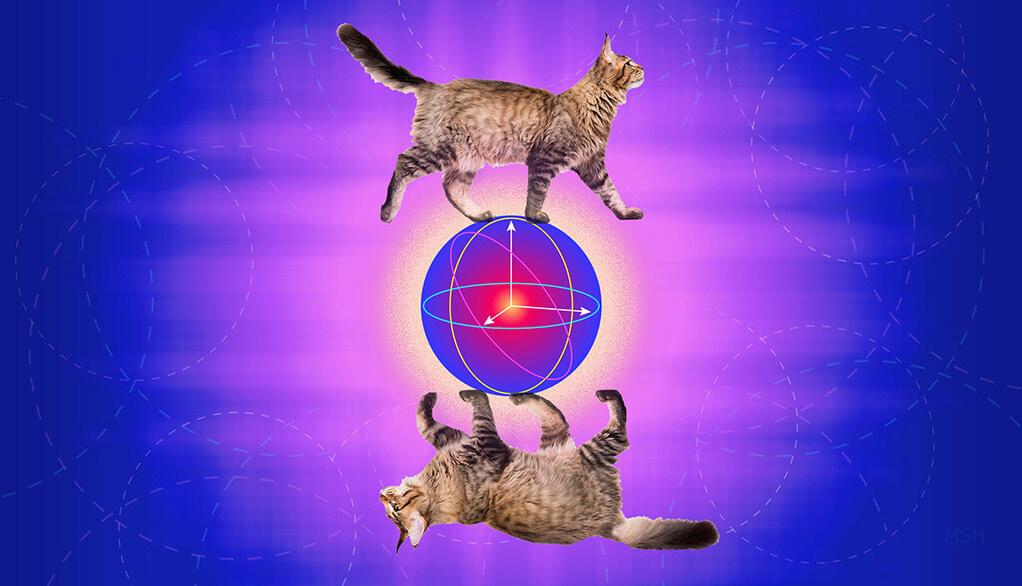
It is Yale’s latest breakthrough in the effort to master and manipulate the physics necessary for a useful quantum computer: correcting the stream of errors that crop up among fragile bits of quantum information, called qubits, while performing a task.
A new study reporting on the discovery appears in the journal Nature. The senior author is Michel Devoret, Yale’s F.W. Beinecke Professor of Applied Physics and Physics. The study’s co-first authors are Alexander Grimm, a former postdoctoral associate in Devoret’s lab who is now a tenure-track scientist at the Paul Scherrer Institute in Switzerland, and Nicholas Frattini, a graduate student in Devoret’s lab.
Quantum computers have the potential to transform an array of industries, from pharmaceuticals to financial services, by enabling calculations that are orders of magnitude faster than today’s supercomputers.
Yale — led by Devoret, Robert Schoelkopf, and Steven Girvin — continues to build upon two decades
of groundbreaking quantum research. Yale’s approach to building a quantum computer is called “circuit QED” and employs particles of microwave light (photons) in a superconducting microwave resonator.
In a traditional computer, information is encoded as either 0 or 1. The only errors that crop up during calculations are “bit-flips,” when a bit of information accidentally flips from 0 to 1 or vice versa. The way to correct it is by building in redundancy: using three “physical” bits of information to ensure one “effective” — or accurate — bit.
In contrast, quantum information bits — qubits — are subject to both bit-flips and “phase-flips,” in which a qubit randomly flips between quantum superpositions (when two opposite states exist simultaneously).
Until now, quantum researchers have tried to fix errors by adding greater redundancy, requiring an abundance of physical qubits for each effective qubit.
Enter the cat qubit — named for Schrödinger’s cat, the famous paradox used to illustrate the concept of superposition. The idea is that a cat is placed in a sealed box with a radioactive source and a poison that will be triggered if an atom of the radioactive substance decays. The superposition theory of quantum physics suggests that until someone opens the box, the cat is both alive and dead, a superposition of states. Opening the box to observe the cat causes it to abruptly change its quantum state randomly, forcing it to be either alive or dead.
“Our work flows from a new idea. Why not use a clever way to encode information in a single physical system so that one type of error is directly suppressed?” Devoret asked.
Unlike the multiple physical qubits needed to maintain one effective qubit, a single cat qubit can prevent phase flips all by itself. The cat qubit encodes an effective qubit into superpositions of two states within a single electronic circuit — in this case a superconducting microwave resonator whose oscillations correspond to the two states of the cat qubit.
“We achieve all of this by applying microwave frequency signals to a device that is not significantly more complicated than a traditional superconducting qubit,” Grimm said.
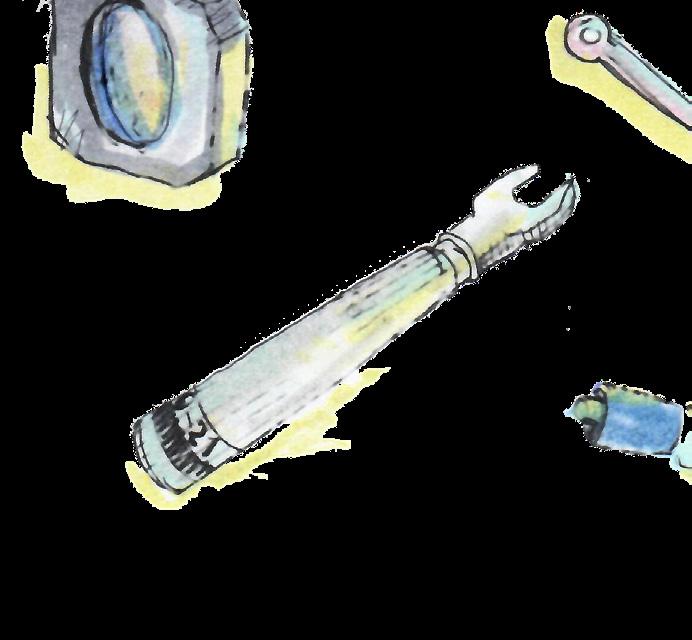
The researchers said they are able to change their cat qubit from any one of its superposition states to any other superposition state, on command. In addition, the researchers developed a new way of reading out — or identifying — the information encoded into the qubit.
“This makes the system we have developed a versatile new element that will hopefully find its use in many aspects of quantum computation with superconducting circuits,” Devoret said.
Co-authors of the study are Girvin, Shruti Puri, Shantanu Mundhada, and Steven Touzard, all of Yale; Mazyar Mirrahimi of Inria Paris; and Shyam Shankar of the University of Texas-Austin. The United States Department of Defense, the United States Army Research Office, and the National Science Foundation funded the research.
New collaboration to break ground — by breaking symmetries
At the heart of that research is symmetry, properties of a structure that are unchanged when viewed in different ways, such as in a mirror or when rotated by 90 degrees.
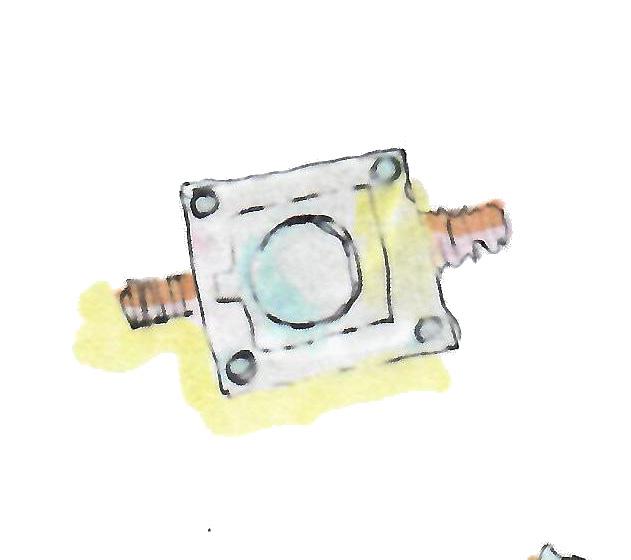
Symmetries have a profound effect on how waves — such as sound waves and light waves — propagate in natural and artificial materials. That’s why scientists in an array of disciplines are working to understand symmetries and symmetry breaking in order to design new materials with exotic wave properties and develop new tools for wave manipulation.
Yale’s A. Douglas Stone, the Carl A. Morse Professor of Applied Physics and Physics, is a principal investigator for a new, multi-institution research collaboration that will explore wave properties and symmetries. The four-year, $8 million Simons Collaboration on Extreme Wave Phenomena Based on Symmetries will bring together concepts in applied mathematics, theoretical and computational physics, modern optics and photonics, and acoustics.
Stone, who is also deputy director of the Yale Quantum Institute, spoke with YaleNews about symmetries research and the new grant.
“Many of the topics sound very abstract and technical… [but] there is always a good chance a deeper understanding can lead to some useful devices.”
- A. Douglas Stone
A new generation of materials, engineered at the microscopic level, is poised to bring major advances to wireless communications, biomedical research, laser technologies, energy research, and computing.
What is the mission of the Simons Collaboration grant program?
The Simons Foundation is unusual in that a major part of its mission is to support research in mathematical and quantitative sciences. James Simons, the founder, was a world-class mathematician at Stony Brook University before leaving in the ’80s to start one of the most successful mathematical and algorithm-oriented hedge funds in the world. In general, the foundation supports activities that build community in STEM fields, and specifically with the Simons Collaborations, they try to create synergy between researchers at various institutions, focusing on a broad frontier area that is showing exciting progress and can bring together researchers from multiple disciplines.
What is Yale’s role in the collaboration?
This collaboration involves applied mathematicians, physicists, engineers, and people working with electromagnetic, acoustic, and mechanical waves. Yale’s involvement is primarily in the field of optics or electromagnetic waves. One idea developed here, starting in 2010, is that of coherent perfect absorption — also called the anti-laser — which fits perfectly into the theme of extreme wave phenomena based on symmetry. This theory implied that any structured material, no matter how complicated, can be illuminated with a special kind of input wave that will be trapped perfectly by the structure and ultimately completely absorbed by it.
How many people and laboratories here on campus will be involved?
My research group received funding, but there could be experimental or technological implications of the research that could draw in a number other groups, such as Hui Cao in applied physics or Jack Harris in physics.
What do we mean by “symmetries” and “symmetry breaking,” in this context?
We are always thinking of waves as interacting with some kind of material structure, which may have some kinds of symmetry, such as a geometric symmetry, which looks the same when reflected through some central point or plane. The coherent perfect absorber exploits the idea of time-reversal symmetry — that if one ran time backwards, the observed process could also exist. In that specific case the process that we imagine running backwards is the emission of light from a laser. Symmetry breaking occurs when a structure is deformed and no longer has a particular symmetry in space or time. However, even more interesting is “spontaneous” symmetry breaking. Physicists love this. The symmetry still exists, but a particular wave solution fails to respect that symmetry, only the whole set of solutions does. Exactly at the point at which the solutions stop respecting the symmetry, the system becomes hyper-sensitive to any disturbance. Then the fun begins.
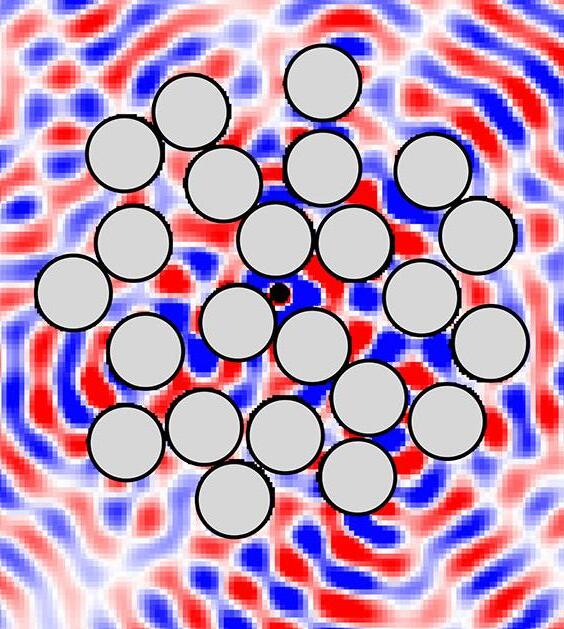
Are there practical applications you can see coming out of the project?
Definitely. One member of the collaboration has already pioneered hand-held ultrasound scanners; others are working on how to get perfect reception of signals in a noisy environment or how to toggle between different receivers in a noisy environment. Of course, many of the topics sound very abstract and technical, but because they involve the kinds of waves already prevalent in technology, such as sound and electromagnetic waves, there is always a good chance a deeper understanding can lead to some useful devices.
Yale quantum institute facilitates the research and teaching of quantum science on the Yale campus. YQI performs outreach in the form of seminars, workshops, and by hosting leading scientists from around the world.

